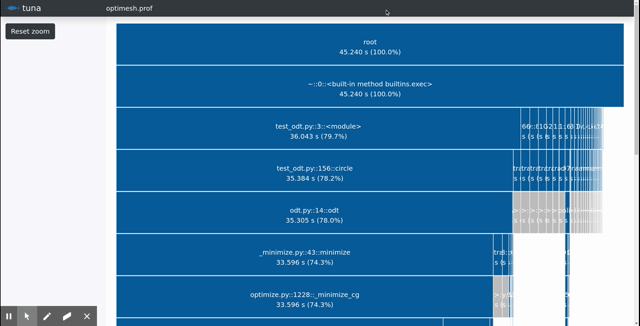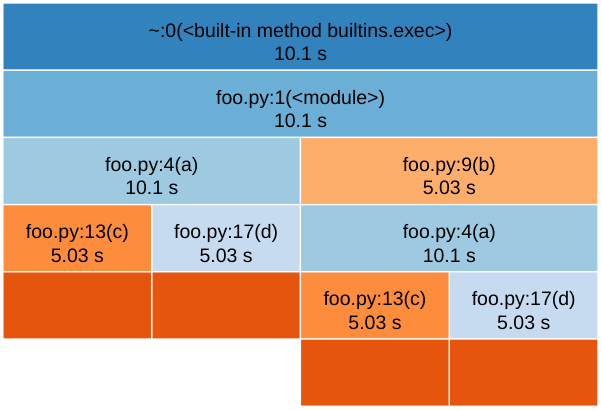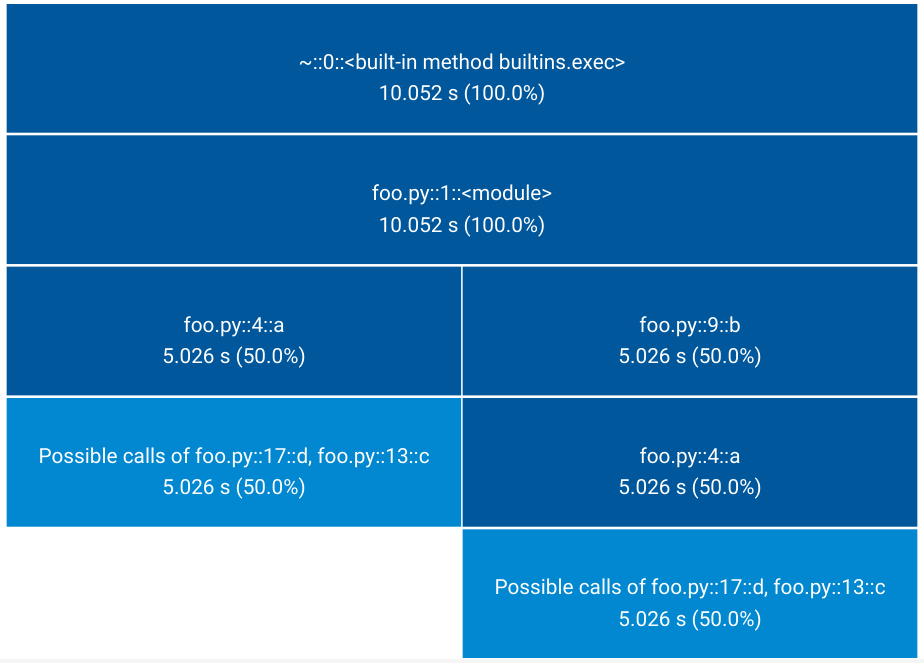
Research
/Security News
Critical Vulnerability in NestJS Devtools: Localhost RCE via Sandbox Escape
A flawed sandbox in @nestjs/devtools-integration lets attackers run code on your machine via CSRF, leading to full Remote Code Execution (RCE).
Performance analysis for Python.
tuna is a modern, lightweight Python profile viewer inspired by SnakeViz. It handles runtime and import profiles, has minimal dependencies, uses d3 and bootstrap, and avoids certain errors present in SnakeViz (see below) and is faster, too.
Create a runtime profile with
python -mcProfile -o program.prof yourfile.py
or an import profile with
python -X importtime yourfile.py 2> import.log
and show it with
tuna program.prof

The whole timed call tree cannot be retrieved from profile data. Python developers made the decision to only store parent data in profiles because it can be computed with little overhead. To illustrate, consider the following program.
import time
def a(t0, t1):
c(t0)
d(t1)
def b():
a(1, 4)
def c(t):
time.sleep(t)
def d(t):
time.sleep(t)
if __name__ == "__main__":
a(4, 1)
b()
The root process (__main__) calls a() which spends 4 seconds in c() and 1 second
in d(). __main__ also calls b() which calls a(), this time spending 1 second in
c() and 4 seconds in d(). The profile, however, will only store that c() spent a
total of 5 seconds when called from a(), and likewise d(). The information that the
program spent more time in c() when called in root -> a() -> c() than when called in
root -> b() -> a() -> c() is not present in the profile.
tuna only displays the part of the timed call tree that can be deduced from the profile. SnakeViz, on the other hand, tries to construct the entire call tree, but ends up providing lots of wrong timings.
 |  |
|---|---|
| SnakeViz output. Wrong. | tuna output. Only shows what can be retrieved from the profile. |
tuna is available from the Python Package Index, so simply do
pip install tuna
to install.
To run the tuna unit tests, check out this repository and type
pytest
tuna includes a tuna line / cell magic which can be used as a drop-in replacement for
the prun magic. Simply run %load_ext tuna to load the magic and then call it like
%tuna sleep(3) or
%%tuna
sleep(3)
prun is still used to do the actual profiling and then the results are displayed in
the notebook.
After forking and cloning the repository, make sure to run make dep to install
additional dependencies (bootstrap and d3) which aren't stored in the repo.
This software is published under the GPLv3 license.
FAQs
Visualize Python performance profiles
We found that tuna demonstrated a healthy version release cadence and project activity because the last version was released less than a year ago. It has 1 open source maintainer collaborating on the project.
Did you know?

Socket for GitHub automatically highlights issues in each pull request and monitors the health of all your open source dependencies. Discover the contents of your packages and block harmful activity before you install or update your dependencies.

Research
/Security News
A flawed sandbox in @nestjs/devtools-integration lets attackers run code on your machine via CSRF, leading to full Remote Code Execution (RCE).

Product
Customize license detection with Socket’s new license overlays: gain control, reduce noise, and handle edge cases with precision.

Product
Socket now supports Rust and Cargo, offering package search for all users and experimental SBOM generation for enterprise projects.